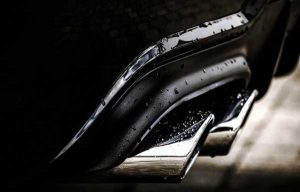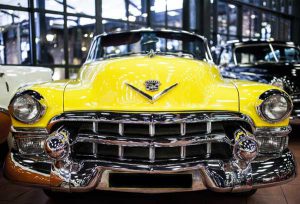MACEDONIA, Ohio, October, 2017 – Blackburn OEM Wheel Solutions has purchased another additional facility to accommodate the demands of their continued growth. The new facility is located in Streetsboro Ohio and provides much needed additional warehouse space, along with additional shipping and receiving docks. The corporate office will continue to…
How to Polish Chrome
Polishing the bumpers and chrome details on classic cars is a cathartic activity that many classic car collectors enjoy. Not only does it give you a wonderful way to spend an afternoon, but the resulting shine is undeniably attractive. To get the best polish for your classic car, follow these tips.
Plastic Chrome Vs. Metal Chrome

One important thing to note is the difference between plastic chrome, which is what most modern cars use to achieve a mirror-like surface and metal chrome. On classic and antique cars, the chrome is typically metal chrome. Metal chrome differs from plastic chrome in how you polish and restore them. A quick way to test is to use a magnet and test to see if there is an attraction between your workpiece or not. If there is an attraction, then you can proceed by polishing it as you would a metal piece.
Applying Polish
Before you apply polish to the chromed surface, it is important to ensure the area is thoroughly clean. Any dirt remaining on the chrome surface can damage the finish when you use a polishing compound (especially if you’re using a power tool to buff the surface). Using a clean cotton cloth, apply a small amount of the polish to the cloth. Then carefully work in small sections, rubbing the chrome with the cloth. Methodically doing this process can save you a lot of uncertainty and give you the best finish. Never use abrasive pads for polishing your chrome bumpers! Abrasives have no place in the polishing of chrome parts, just the restoration of them.
Restoring Chrome Finishes

If you find that after you have thoroughly washed the surface you wish to polish, that there are pits, rust, or other flaws, simply adding a polish may not be enough to restore the shine of your chrome wheels or bumpers. If the pitting is relatively minor, using a super fine grade stainless steel combined with a cleaning solution or a mild acid can solve anodized sections or small pits. Ensuring that the workpiece is dry after washing can help prevent future rusting.
However, if your classic car has extensive rust issues that are more than surface level rust, cleaning through it can remove too much material which will compromise the structural integrity of the part. In these cases, it is best to contact a bumper re-chroming expert to see if the part is still salvageable or if you will need to purchase one from a donor vehicle. Naturally, that decision depends upon the extent of the damage, the availability of parts, and the costs associated with each.
Prevent Rust All Together
The best way to keep your chrome shining is not to let it rust in the first place! Regularly cleaning and polishing your classic car’s chrome can prevent issues from manifesting later. A good rule of thumb: if you drive it more, you have to take care of it more. Additionally, for cars in northern states, where salt is frequently used to combat winter road conditions, avoiding driving on those days, or transporting your classic with a trailer instead of driving is helpful.
Rust and oxidization, unfortunately, is inevitable with chrome on classic cars. But prevention can help keep the chrome details of your vehicle rust-free for longer.







